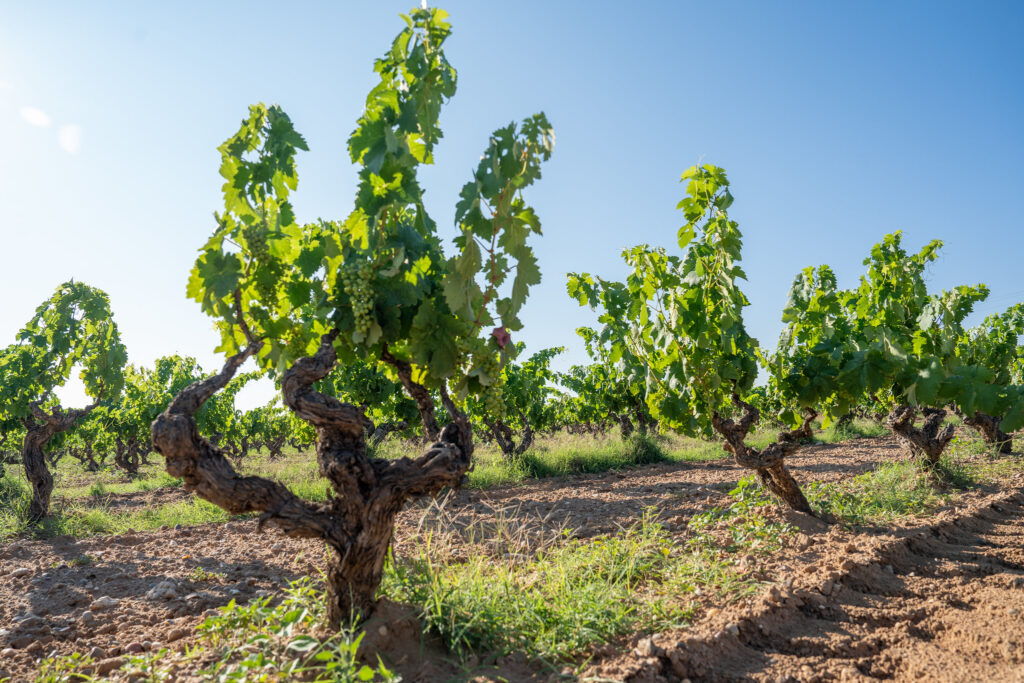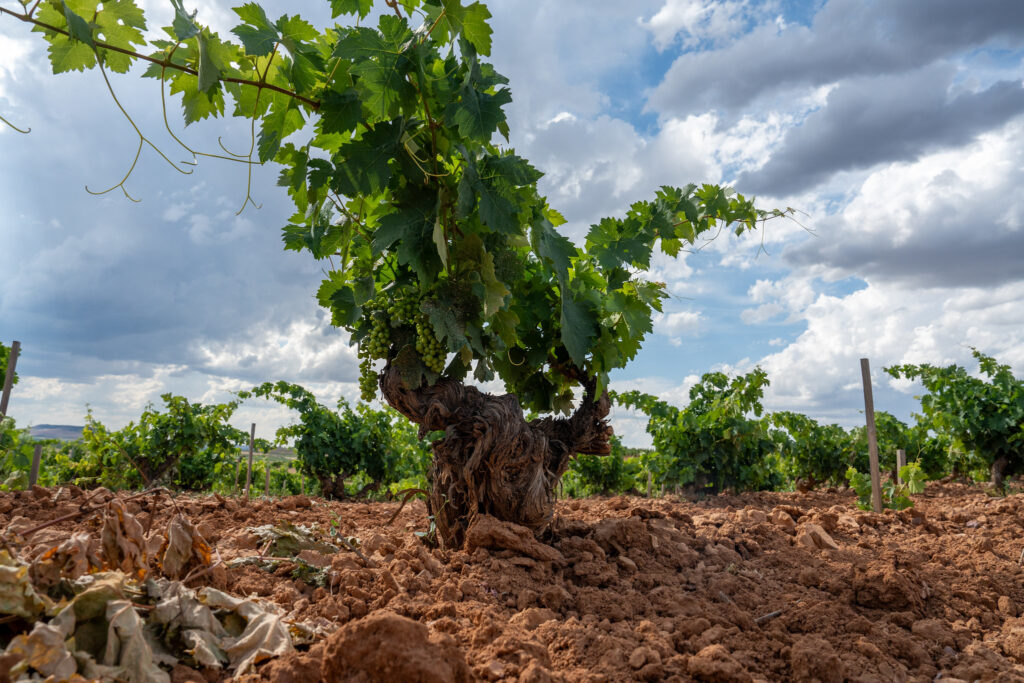Ribera del Duero’s Richness in Old Vines.
Spain’s Ribera del Duero is becoming increasingly popular when it comes to producing fine red wine. Their success comes from the great potential their soils and climate hold, but one of the most captivating aspects of the region’s winemaking lies in its abundance of old vines, often referred to as ‘viñas viejas’ in Spanish.
These venerable vines, some of which are over a century old, contribute to the region’s unique character and the exceptional quality of its wines. The presence of these ancient vines not only speaks to the region’s rich history but also plays a vital role in crafting wines of unparalleled depth, complexity, and expression.
Ribera del Duero is home to a substantial number of old vines, with a significant portion of the vineyards boasting vines that are decades old or even over a century in age. It’s estimated that around 20-30% of the vineyards in the region are comprised of these venerable vines, numbers that ensure Ribera del Duero a lead in Spain, but even wine regions world-wide. This prevalence of old vines underscores the region’s commitment to preserving its viticultural heritage and harnessing the potential that these aged plants offer.
The sight of gnarled, weathered vines with deep roots intertwining with the soil is a visual testament to Ribera del Duero’s vinous legacy. Many of these old vines were planted by previous generations, their roots digging deep into the region’s chalky soils. These vines have withstood the test of time, surviving harsh climatic conditions and adapting to the land’s nuances. Their longevity is a testament to the generations of winemakers who have lovingly tended to them, ensuring that their fruits continue to yield wines of extraordinary character.

Lower Yields, More Soul
Cultivating old vines presents its own set of challenges, including lower yields and the need for meticulous care due to the vines’ advanced age. However, the rewards are well worth the effort. The wines crafted from these vines embody the essence of Ribera del Duero, carrying with them the wisdom of the past and the promise of the future. They are a living tribute to the generations of winemakers who have shaped the region’s identity, and they continue to captivate the palates of wine enthusiasts around the world.
The age of the vines directly impacts the quality and flavor profile of the grapes they produce. Older vines naturally yield fewer grapes, which results in more concentrated flavors. The smaller grape clusters and reduced yield allow the vine to channel its energy into fewer berries, resulting in greater flavor intensity and complexity. Wines crafted from old vines often exhibit deep, rich fruit flavors, nuanced aromatics, and a refined structure that only comes with time.
The connection between old vines and the ability to create wines with exceptional aging potential cannot be understated. The deep-rooted vines are able to extract essential nutrients from the soil, contributing to the grapes’ balance and maturity. This translates into wines that possess the structure and acidity necessary for long-term cellaring. As these wines evolve in the bottle, they offer a window into the past and a glimpse of the potential held within the region’s terroir.

Ribera del Duero’s Super Powers
In a rapidly changing world of winemaking, the preservation of old vines holds both cultural and oenological significance. The cultivation of these ancient vineyards is a homage to the winemaking practices of generations past, a living link to the techniques and traditions that shaped the region. Moreover, the wines crafted from old vines showcase the harmonious relationship between nature, history, and human craftsmanship, fostering a deep sense of connection and continuity.
Ribera del Duero’s commitment to maintaining its old vines is an investment in the future. The cultivation of these vines requires careful attention and dedication, but the rewards are immeasurable. As these vineyards continue to produce grapes of extraordinary quality, winemakers are able to craft wines that tell a story of the land, the people, and the generations that have come before.
As Ribera del Duero continues to thrive as a world-renowned wine region, its commitment to old vines remains unwavering. These ancient sentinels of the land contribute immeasurably to the region’s wines, offering a glimpse into the past while paving the way for a vibrant and promising future. With each bottle that bears the legacy of old vines, Ribera del Duero captures not only the heart of its terroir but also the spirit of the generations who have nurtured its vineyards for centuries.

Legacy of the Land: Ribera del Duero’s Time-Honored Vines and Their Lasting Impact
In conclusion, Ribera del Duero’s rich heritage of old vines stands as a beacon in the world of winemaking, exemplifying the seamless blend of history, culture, and natural excellence. These venerable vines, deeply rooted in the region’s chalky soils, are not just remnants of the past but are active contributors to the area’s distinguished wine profile. The region’s dedication to preserving these ancient vines reflects a profound respect for the past and an insightful investment in the future. Wines produced from these old vines are not merely beverages; they are narratives of resilience, tradition, and evolution. Each glass serves as a testament to the enduring legacy of Ribera del Duero’s winemakers and their enduring bond with the land. As Ribera del Duero continues to enchant wine enthusiasts globally, its old vines remain a symbol of unparalleled quality, capturing the essence of the region and promising an enduring legacy for generations to come.
This article is written by our own Niels Aarts, Official Ambassador for the Ribera del Duero D.O. Picture credits: Consejo Regulador D.O. Ribera del Duero.

